Jeff Bezos is stepping down as Amazon CEO. What is his legacy?
In a letter published yesterday, Jeff Bezos announced he is stepping down as Amazon CEO later this year. Andy Jassy, Amazon’s head of cloud computing will be taking the helm.
Jeff Bezos founded the eCommerce retailer 27 years ago in a garage when it “was only an idea” and people were asking him “What’s the internet?”.
Leveraging the power of the internet and thanks to his vision on what makes a successful company, today Amazon is the world’s largest online retailer of consumer products and a leader in the cloud computing segment.
With a market value of 1.6 trillion dollars, Amazon is in the Top 5 big tech US companies and it doesn’t look like it’s going to slow down.
“Being the CEO of Amazon is a deep responsibility, and it’s consuming. When you have a responsibility like that, it’s hard to put attention on anything else”, he writes. In his new role as Executive Chair of the Amazon Board, Jeff Bezos will still watch closely over the company but will dedicate his time and energy to other Amazon initiatives such as the Day 1 Fund, the Bezos Earth Fund, Blue Origin, The Washington Post “and my other passions”.
As Jeff Bezos steps down as CEO of the world’s largest eCommerce retailer, let’s take a look at what he leaves behind, his legacy.
Jeff’s business strategy is his legacy.
Here are eight essential factors of Jeff’s successful business strategy for Amazon:
1. Move quickly to solidify and extend your current position
In 1997, with big tech companies like Microsoft and AOL expressing interest in online commerce, Bezos saw a window of opportunity.
“Our goal is to move quickly to solidify and extend our current position while we begin to pursue online commerce opportunities in other areas. We see substantial opportunity in the large markets we are targeting”, he writes in his 1997 shareholder letter. I remind you that, at the time, Amazon was still selling books.
2. Set out to delight your customers
Jeff believes complaining customers are a company’s most valuable resource for growth. They reveal blind spots that employees or managers could not otherwise identify giving the business the opportunity to improve and develop.
Amazon’s focus on customer obsession is one of its underlining factors for success.
3. Make bold investment decisions
At the heart of Amazon’s investments is the customer.
Every investment that Amazon makes is to further improve customer satisfaction and experience by developing systems, infrastructure and service.
4. Become aware of proxies
In his 2016 shareholder letter, Jeff talks about the danger of allowing proxies to gain power within the company.
Proxy is something or someone who acts as a substitute. This is when the process has become more important than the result and replaced it. It’s the process as a substitute for the outcome.
When someone in the company starts saying This is how we’ve always done it, it’s time for a change.
5. Your employees must think like an owner
Jeff acknowledged early on that hiring the right people was paramount if Amazon was to be successful and achieve its objectives. “Setting the bar high in our approach to hiring has been, and will continue to be, the single most important element of Amazon.com’s success.”
The retailer behemoth compensates its employees in Amazon stock than cash because becoming stockholders changes their mindset.
6. Embrace external trends
Businesses that adapt to the latest technological trends and customer behaviour changes evolve and survive. Businesses that resist change, don’t survive.
His advice to every company founder is to acknowledge powerful external trends like AI and machine learning and embrace them quickly.
7. Make high-quality decisions fast
Large organizations like Amazon have many things going for them with one downside: they are slow at making decisions.
Jeff didn’t allow this to happen to Amazon.
He created a system of making high-quality decisions fast which relies entirely on the Day 1 mindset. Day 1 companies are startups, nimble and agile, bursting with vitality. Day 2 companies are already heading for the end. Amazon is a Day 1 company.
8. Implement high standards
Amazon’s obsession with customer satisfaction has led to a number of outstanding product innovations (Alexa, AWS) and excellent customer experience (Amazon Go, 1-click purchases).
What does it take to achieve such results? Implementing high standards in the company.
At the core of Amazon’s supremacy is innovation. So it’s no surprise that Jeff Bezos ends his letter to the employees with an encouragement to continue down the path of innovation.
Keep inventing, and don’t despair when at first the idea looks crazy. Remember to wander. Let curiosity be your compass. It remains Day 1.
Jeff
Join the Conversation
We’d love to hear what you have to say.
Get in touch with us on our LinkedIn Page, Facebook Page, Twitter or TikTok.
Jeff Bezos: 8 business lessons from his letters to shareholders
According to recent industry figures, Amazon is the leading eCommerce retailer in the United States with 38,7% share of retail eCommerce sales (source).
Here are the latest Amazon statistics:
- $280.5 billion in net sales
- $11.59 billion in net income
- The most popular product categories: Electronics
- Number of paying Amazon Prime members worldwide: 150 million
- Share of US Amazon customers who are Amazon Prime members: 65%
- Unique monthly US visitors to Amazon sites: 208 million
- Share of direct traffic to Amazon.com: 56.47%
- US Amazon Prime Day conversion rate: 13.5%
- Average annual spending of Amazon Prime members: $1,400
- The most important reason for US shoppers to shop on Amazon: fast, free shipping
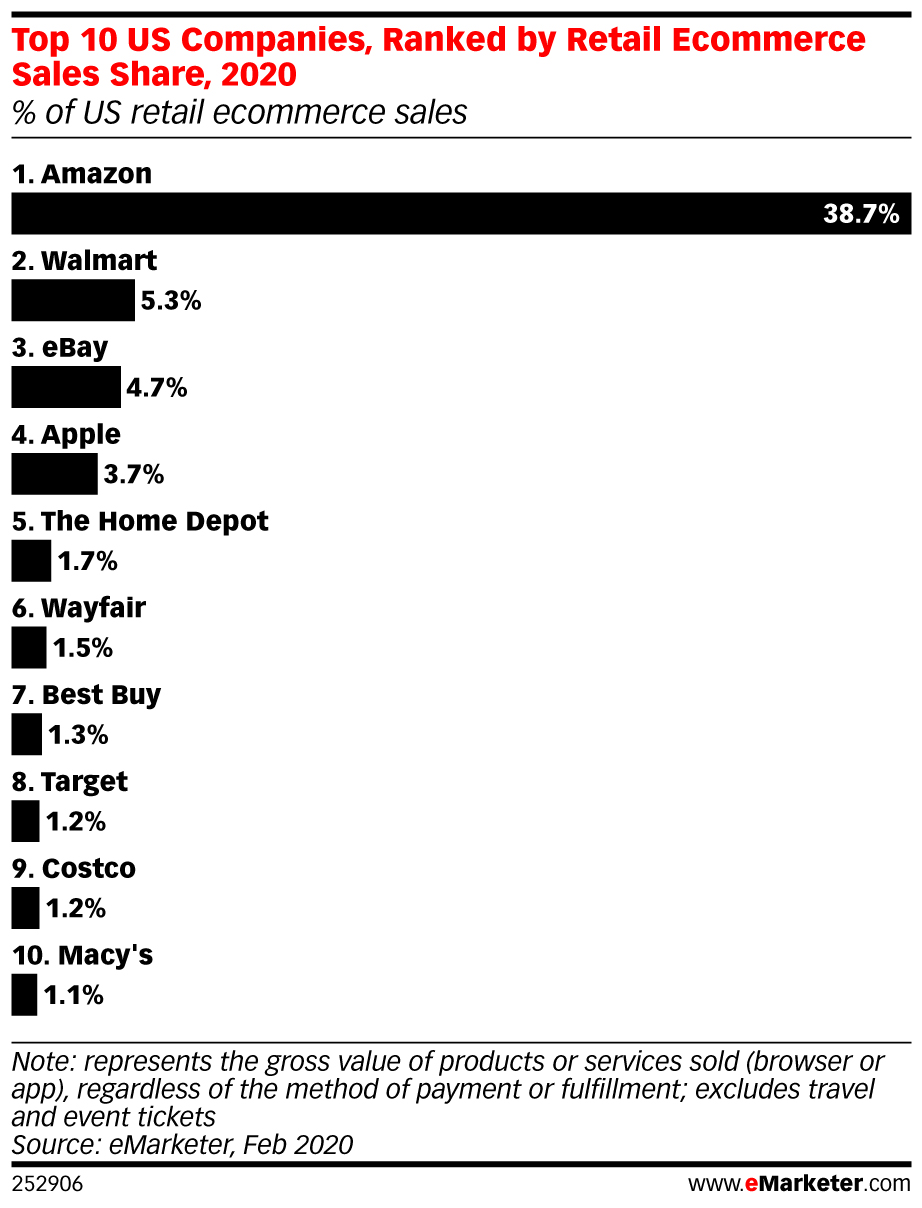
Amazon is #1 in the U.S. Let’s zoom out and take a global approach.
Is the giant retailer maintaining its top place when compared to other eCommerce retailers?
As you can see below, the answer is yes.
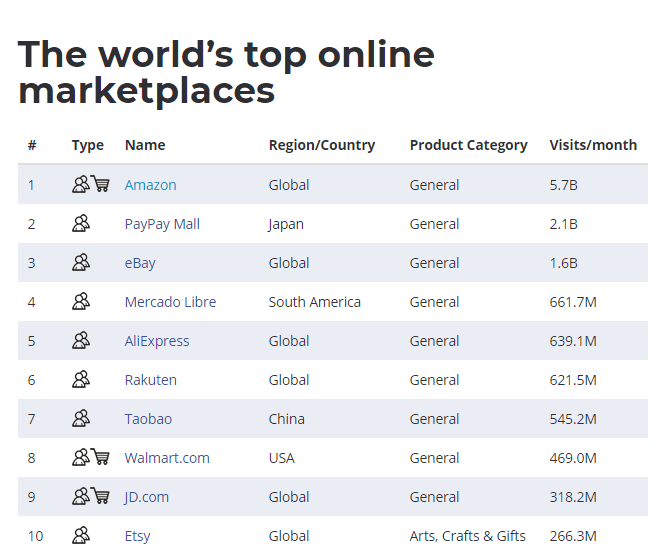
image source: webretailer.com
Amazon.com receives twice the monthly number of visitors as #2, the Japanese retailer PayPay Mall.
If the eCommerce retail industry were a marathon, Amazon would be the front runner, leading the other runners and winning by a landslide.
What makes Amazon so successful and powerful?
What drives this marathon runner to push harder year after year?
How is Jeff Bezos coaching the Amazon collective?
For the purpose of this article, I have analysed Jeff Bezos’ annual letters to shareholders from 2016, 2017, 2018 and 2019. As any Jeff Bezos fan knows, each of his letters ends with a copy of his famous 1997 letter so I have included it in my analysis.
Jeff Bezos: 8 business lessons from his annual letters to shareholders
1. Move quickly to solidify and extend your current position
At the end of 1997, in just three years since starting the company, Amazon.com’ revenue had increased by 838%, selling to more than 1.5 million customers while extending its market leadership in an increasingly aggressive competitive environment (source).
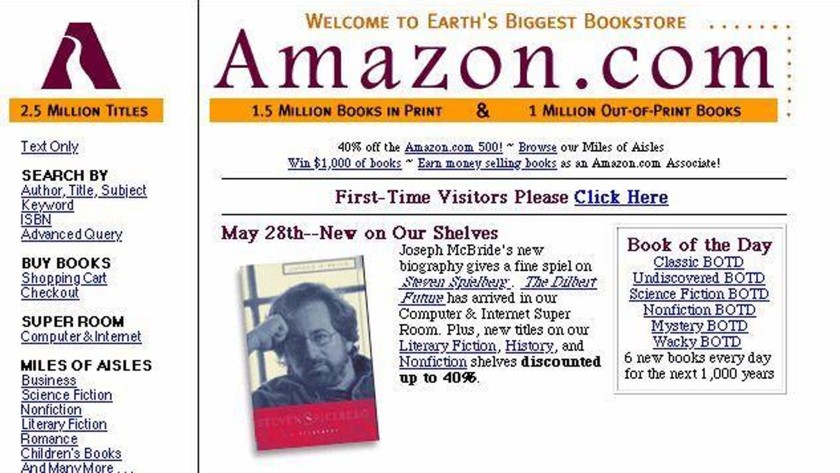
image source: latimes.com
1997 is the year Amazon filed to go public and was preparing to compete with big tech companies AOL and Microsoft which had announced their intention to derive a substantial portion of their revenues from online commerce.
I remind you that Amazon was still selling books at that time.
But that didn’t discourage Bezos who had a strong belief in the online opportunity as expressed in his 1997 letter:
We have a window of opportunity as larger players marshal the resources to pursue the online opportunity and as customers, new to purchasing online, are receptive to forming new relationships. The competitive landscape has continued to evolve at a fast pace. Many large players have moved online with credible offerings and have devoted substantial energy and resources to building awareness, traffic, and sales. Our goal is to move quickly to solidify and extend our current position while we begin to pursue the online commerce opportunities in other areas. We see substantial opportunity in the large markets we are targeting.
2. Set out to delight your customers
After reading Jeff’s letters, if I were to choose only one factor responsible for Amazon’s success it would be his focus on customers.
Complaining customers are a company’s most valuable resource for growth. They reveal blind spots that employees or managers could not otherwise identify giving the business the opportunity to improve and develop.
In his 2016 letter, Jeff says “customers are always beautifully, wonderfully dissatisfied, even when they report being happy and business is great.” In his 2018 letter, he defines them as “divinely discontent”.

image source: blog.aboutamazon.com
Achieving the goal of delighting customers means developing a powerful system built on true customer obsession.
So here’s the Amazon customer-focused trifecta:
- Listen to your customers and use this data to offer them something they simply could not get any other way
- Improving the shopping experience never ends so pursue it with tenacity and persistence
- Invent on behalf of your customers. Your customers will always want something better and it’s up to you to figure out what exactly it is they expect because, and here’s your challenge, they don’t know what to ask for.
We must invent on their behalf. We have to tap into our own inner imagination about what’s possible.
Jeff Bezos
That’s how AWS, one of Amazon’s most successful services came to be. No customer specifically asked for it and yet that’s what they needed. In 2019, AWS generated $10.2 billion in net sales, up 33% from last year.
Remarkable customer experience starts with heart, intuition, curiosity, play, guts, taste. You won’t find any of it in a survey.
Jeff Bezos
3. Make bold investment decisions
In his 1997 letter, Jeff talks about investments and the criteria underlining his investment decisions.
At the heart of Amazon’s investments is the customer. Every investment that Amazon makes is to further improve customer satisfaction and experience by developing systems, infrastructure and service.
Is the investment going to help the company come closer to its goal of achieving market leadership? Is the investment going to support the company achieve its long-term business objectives? If the answer is yes, then the investment gets the green light.
Always measure the effectiveness of your investments. Establish a set of KPIs to measure the results of your investments, discard the ones that don’t perform as expected and double down on the investments that work. Learn from both your failures and your successes.
If you see a sufficient probability of gaining market leadership advantages, go for it and be bold. There’s no need to start small, go bold!
4. Become aware of proxies
What is a proxy? Proxy is something or someone who acts as a substitute. In his 2016 letter, Jeff talks about the danger of allowing proxies to gain power within the company.
Have you ever heard someone say when referring to a bad outcome Well, we followed the process? That is when the process has become more important than the result and replaced it. It’s the process as a substitute for the outcome.
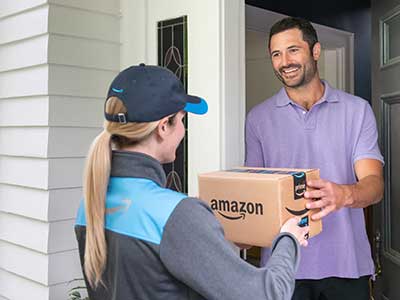
image source: amazon.com
This is a dangerous place for a company and could contribute to its downfall. Jeff’s advice is to become aware of any proxies influencing your business outcomes and eliminate them. Don’t allow market research and customer surveys to become proxies for your customers.
Good inventors and designers deeply understand their customer. They spend tremendous energy developing that intuition. They study and understand many anecdotes rather than only the averages you’ll find on surveys. They live with the design.
Jeff Bezos
5. Your employees must think like an owner
Jeff acknowledged early on that hiring the right people was paramount if Amazon was to be successful and achieve its objectives. “Setting the bar high in our approach to hiring has been, and will continue to be, the single most important element of Amazon.com’s success.”
Amazonians are committed to the company’s core values and goals. They are passionate about working to build something important, something that matters to their customers, something that they can all tell their grandchildren about. Jeff and his hiring team focus on attracting and retaining versatile and talented employees.
“When I interview people I tell them, You can work long, hard, or smart, but at Amazon.com you can’t choose two out of three”, Jeff said in his 1997 letter.

image source: amazon.com
How is Amazon motivating its valuable employees?
The company provides them with two options to choose from: receive compensation in Amazon stock or cash. The retailer would rather compensate its employees in Amazon stock than cash because becoming stockholders changes their mindset. Jeff expects employees to think and act like an owner. To achieve this, employees must actually be owners.
How do you support your employees to take ownership of their work? Do you believe employees thinking and acting like owners makes a difference in the quality of their work?
6. Embrace external trends
Today the business environment is shaped by a wide variety of external factors ranging from technology, online and digital to cultural shifts, changes in customer behaviour etc. Businesses that have adapted to these trends and transformed, as a result, survived. Businesses that have resisted change, didn’t.
Jeff talks about external trends and why businesses should embrace them in his 2016 letter. His advice to every company founder is to acknowledge powerful external trends and embrace them quickly.
Depending on the size of your organization, achieving this could be easy or difficult. It’s somewhat easier for a startup to embrace trends than for a large organization. That’s why it’s imperative for large companies to become agile.
When talking about external trends, Jeff is referring to machine learning and AI.
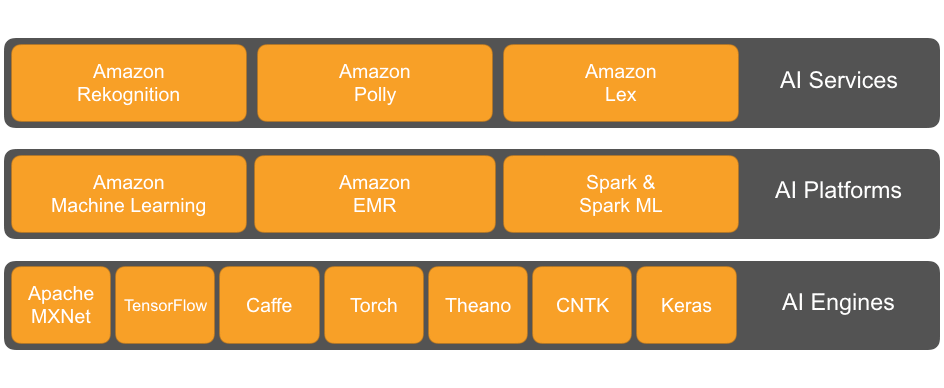
image source: aws.amazon.com
Amazon.com has been working on developing its own machine learning-powered recommendation algorithm since the late 1990s.
In 2003, the development team at Amazon published a paper describing a new recommendation algorithm. The recommendation algorithm they created was called the item-to-item collaborative filter and allowed the online store to radically change for each customer based on their interests.
A 2013 McKinsey article reported that Amazon’s machine learning engine was responsible for 35% of its online sales. I’m sure this number is higher today.
Jeff points out that machine learning drives Amazon’s algorithms for demand forecasting, product search ranking, product and deals recommendations, merchandising placements, fraud detection, translations.
But much of the impact of machine learning is less visible but equally important. Machine learning and AI have a prominent role in the company’s future.
7. Make high-quality decisions fast
Amazon is leading the global eCommerce landscape falling back on 26 years of experience in the industry. It’s one of the big five tech companies, FAAMG—Facebook, Amazon, Apple, Microsoft, and Google and the largest employer among them, with 840,000 employees.
Large organizations have many things going for them (attracting talent, high-value wages, global development, technology advancements etc) with one downside: they are slow at making decisions.
Jeff calls these established large organizations Day 2 companies. Day 1 companies are startups, nimble and agile, bursting with vitality. Day 2 companies are already heading for the end.
Day 2 is stasis. Followed by irrelevance. Followed by excruciating, painful decline. Followed by death. And that is why it is always Day 1.
Jeff Bezos
Twenty-six-year-old Amazon is technically a Day 2 company but with a Day 1 mindset. It’s what allows the giant retailer to keep the energy and dynamism of a lean startup while being #1 in the global eCommerce industry.
How do you make high-quality decisions fast?
Jeff gives the following pointers in this regard:
- Never use a one-size-fits-all decision-making process;
- Make decisions with around 70% of the information you wish you had. If you wait for 90%, in most cases, you’re probably being slow;
- Be good at quickly recognizing and correcting bad decisions. Being wrong may be less costly than you think, whereas being slow is going to be expensive for sure;
- Recognize true misalignment issues early and escalate them immediately;
- Use the phrase “disagree and commit”. If you have a conviction on a particular direction even though there’s no consensus, ask everyone else to gamble with you on it and you’ll probably get a quick yes.
Choose to have the scope and capabilities of a large company and the spirit and heart of a small one.
Jeff Bezos
8. Implement high standards
Staying ahead of the ever-rising customer expectations is one of Amazon’s objectives.
The giant retailer’s obsession with customer satisfaction has led to a number of product innovations (Alexa, AWS) and excellent customer experience (Amazon Go, the no checkout lines physical store, Prime Air, Amazon’s 30-minute delivery service via drones, one-click purchases).
What does it take to achieve such results?
A high-standard mindset.
Here’s what Jeff says about implementing high standards in your company:
- Expose your people to high standards. High standards are teachable and contagious;
- Articulate a few core principles of high standards which helps accelerate the rate of learning;
- Teach high standards in every arena of interest. High standards are domain-specific;
- Recognize the standard and have realistic expectations on scope. To achieve high standards yourself or as part of a team, you need to form and proactively communicate realistic beliefs about how hard something is going to be.
What are the benefits of high standards?
Building better products and services for customers, recruiting and retaining talent and teaching employees how to be professional starting with doing the most invisible work.
People have a voracious appetite for a better way, and yesterday’s ‘wow’ quickly becomes today’s ‘ordinary’.
Jeff Bezos
Join the Conversation
We’d love to hear what you have to say.
Get in touch with us on our LinkedIn Group, Facebook Group or Twitter.
How AI transformed Amazon into an eCommerce powerhouse
Amazon is an eCommerce powerhouse. In 2019, the giant retailer is expected to hit a 52% market share in the US and almost 14% worldwide.

Amazon global market share 2016-2019 / Statista
Here are 6 relevant statistics which help paint a bigger picture and explain how Amazon dominates the American retail eCommerce:
- During July 2019, Amazon.com had almost 2.65 billion combined desktop and mobile visits, making the platform the most visited e-commerce property in the US;
- In 2018, the company reported total net revenue of $232.89 billion;
- For 2019, the biggest revenue segment were online stores with $31.05 billion in quarterly net sales;
- AWS, Amazon’s subsidiary that provides on-demand cloud computing platforms to individuals, companies, and governments is the platform’s second source of revenue in the amount of $8.3 billion;
- Amazon owns more than 90% market share in 5 product categories: Batteries (97%), Kitchen & Dining (94%), Home Improvement Tools (93%), Golf (92%), and Skin Care (91%) (source);
- Amazon Prime has over 100 million users and has generated $9.7 billion in subscription revenue.
AI is the foundation upon which Amazon grows its online sales and other services
From predicting how many customers might buy a new product to running Amazon Go, the cashier-less grocery store to assessing the quality of fruits and vegetables without smelling them for Amazon Fresh because humans are too slow and inconsistent.
Amazon’s AI capabilities allow the platform to provide customized recommendations. According to the latest reports, Amazon’s recommendation engine drives 35% of total sales.
With more than 100 million Alexa devices having been sold, Amazon’s smart speaker maintains a 70% market share in the US. In a statement on the last quarter of fiscal 2018, Jeff Bezos said Echo Dot was the best-selling item across all products on Amazon globally, and customers purchased millions more devices from the Echo family compared to last year (source).
In 2018, Amazon developers improved Alexa’s ability to understand requests and answer questions by more than 20% through advances in machine learning. Also, the number of research scientists working on Alexa has more than doubled in the past year, Bezos noted.
The giant American e-commerce retailer builds everything on AI because AI solves shoppers’ problems which in turn supports Amazon’s customer-centric approach.
The latest 4 AI-driven company operations and platform features
Aside from the recommendation engine, here are 4 of the latest AI-driven company operations and platform features:
1. AI optimization in the fulfilment centre
There are 1 to 4 million bins per fulfilment centre (warehouse) and on the order of 10 million items. In every fulfilment centre, computer vision systems analyze images to help Amazon staff keep track of everything.
Based on data, AI solves a large combinatorial optimization problem and decides which orders to pick at the same time in order to get them in the same box. This way the system minimizes the distance the transport pods have to travel.
AI optimization makes these decisions in real-time and with information that is constantly changing.
2. Machine learning for Amazon’s product graph
The giant retailer based its product graph on machine learning allowing it to describe every item using product and non-product concepts. The system also forms links between different entities, solving actual customer needs.
People don’t just come to Amazon to buy products. They visit Amazon to see what’s new or interesting, or to discover ways they can simplify and enrich their lives.
Xin Luna Dong – principle scientist on Amazon product graph
3. StyleSnap – AI-powered fashion discovery

StyleSnap is the latest Amazon AI-powered feature which supports fashion-focused shoppers.
How does it work?
The shopper takes a photograph or screenshot of a look that they like, upload it in the app and StyleSnap presents them with recommendations for similar items on Amazon that match the look in the photo. StyleSnap also considers a variety of factors such as brand, price range, and customer reviews.
4. Alexa is helping the blind with its latest feature, Show and Tell
As a customer-centric business, Amazon listens to customer feedback. The blind and visually impaired make up one category of Alexa devices customers. Amazon researchers have provided the smart speaker with a new feature designed to cater to the needs of the blind and visually impaired called Show and Tell.
Show and Tell allows the blind to identify grocery items by holding each item to the Echo Show camera and ask, “Alexa, what am I holding?”. The smart speaker identifies the item through advanced computer vision and machine learning technologies for object recognition.
To learn more about the ways Artificial Intelligence could improve e-commerce businesses, I reached out to Alin Neacsu, AI expert and CTO at Deqod and invited him to answer the following question:
Why should eCommerce sites leverage the power of Artificial Intelligence?
Here is Alin’s answer:
The eCommerce industry is witnessing a redefined form that takes customers to a new level of experience and gratification.
Contributing value to your customers is the only way to sustain, grow, and outshine your business rivals.
Brands now intensively should invest their money in exploring how AI can increase brand competitiveness, various processes, customer loyalty & at last, revenues.
Companies are implementing AI to cut service costs — resolving inbound requests via self-service and quickly answering customer questions through conversational AI and intelligent process automation.
Artificial Intelligence enables a business to understand its customers better and do so more quickly. This capability feeds into an improved overall customer experience using sophisticated email algorithms and automated chatbots.
Another crucial aspect where AI has proven to be of valuable assistance is cart abandonment. It helps expand customer engagement by reducing cart abandonment rates by a substantial extent using Facebook messenger, email, SMS or other channels on the site.
Consumers are often disappointed with eCommerce experience because the product results shown are often irrelevant. To tackle this problem, AI uses natural language processing to narrow, contextualize and improve search results for online shoppers.
Also, it allows having visual search capabilities, finding and matching products. Now, consumers can take a picture of a friend’s new shoes or a new shirt, upload it and then AI enables consumers to easily find similar items through eCommerce stores.
Knowing who your competitors are, and what they are offering can help product owners to make their products, services and marketing really stand out.
The big data tools powered by AI can help shop owners to monitor pricing patterns because frequent analysis of pricing patterns helps them stay competitive. Big data analytics allows them to compare their businesses with those of their competitors’ in just seconds and that can be used to increase the market share. More than 80% of enterprises believe big data analytics will redefine the competitive landscape of their industries within the next few years.
Artificial intelligence marketing is looking to change the game of leveraging customer data with newfound concepts of machine learning. Its purpose is to anticipate the next right move to enhance a customer’s journey which in my opinion is still far from being perfect.
How do you plan to use AI to help your company’s sales?
Let me know in the comments.
Join the Conversation
We’d love to hear what you have to say.
Get in touch with us on Facebook Group and Twitter.
Innovation in the pet food industry – E-commerce for dogs
Are you fed up with buying toys your dog doesn’t play with?
Wouldn’t you like your dog to let you know which toy to buy him?
Now it’s possible thanks to the AI facial recognition tool!
Join the Conversation
We’d love to hear what you have to say.
Get in touch with us on Facebook Group and Twitter.
3 E-Commerce Brands using Instagram Stories effectively
As of June 2018, there are 400 million Instagram accounts using Instagram Stories (source: business.instagram.com).
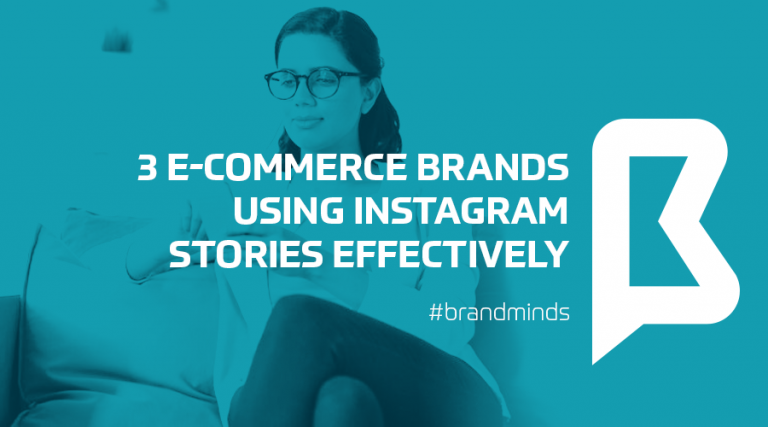
Instagram designed their stories to fulfil people’s need to interact and share in engaging and playful ways on the vertical screen. People use Instagram stories to share and discover content they’re interested in and this includes content from businesses.
With Instagram Stories, businesses have an opportunity to harness their power to connect with customers where they’re already engaged. In fact, one-third of the most viewed stories on Instagram are from businesses (source: business.instagram.com).
Do you take advantage of Instagram Stories for your business?
If you need inspiration to start you up, this article is for you!
3 e-commerce brands using Instagram Stories effectively
1. Too-Faced Cosmetics
Too-Faced Cosmetics is using Instagram Stories to promote its Born This Way face foundation. They set out to influence their customers’ buying decision by showing before and after images and a clear call to action.
Key takeaway: Show, don’t tell!






2. ebay
The e-commerce giant is engaging with Instagrammers by being a source of inspiration for fashionable looks. For this particular Instagram Story, ebay shows its audience how to dress with a Western vibe. ebay is also leveraging polls to attract engagement.
Key takeaway: Be a source of inspiration!





3. Target
With its Instagram Story, Target is placing the spotlight on its school supplies. Here Target is leveraging the stop motion video style with a Swipe up call to action to direct the viewer on its website.
Key takeaway: Surprise your audience with fresh video styles!





If you found our article inspiring, don’t forget to share it with your community!
Top Marketing Techniques in 2017
Smart Insights recently started a research asking its readers to give their opinion on the most important trends in 2017, asking them to choose the most important marketing activity that they think will give their business the biggest incremental uplift in leads and sales in 2017. After receiving 2,352 responses from marketers around the world, the results were:
- Big Data (including market and customer insight and predictive analytics)
- Content marketing Communities (Branded niche or vertical communities)
- Conversion rate optimisation (CRO)/ improving website experiences
- Display(Banners on publishers, ad networks social media including retargeting and programmatic)
- Internet of Things (IoT) marketing applications
- Marketing Automation(incl CRM, behavioural Email marketing and web personalisation)
- Mobile marketing (Mobile advertising, site development and apps)
- Paid search marketing, e.g. Google AdWords Pay Per Click
- Online PR (including influencer outreach)
- Partnerships (including affiliate and co-marketing
- Search Engine Optimisation (SEO or organic search)
- Social media marketing (including Social CRM and Social Customer Care)
- Wearables (e.g. Apple Watch, activity trackers, augmented reality)
More information on the report can be read here.

You can find out more here.


